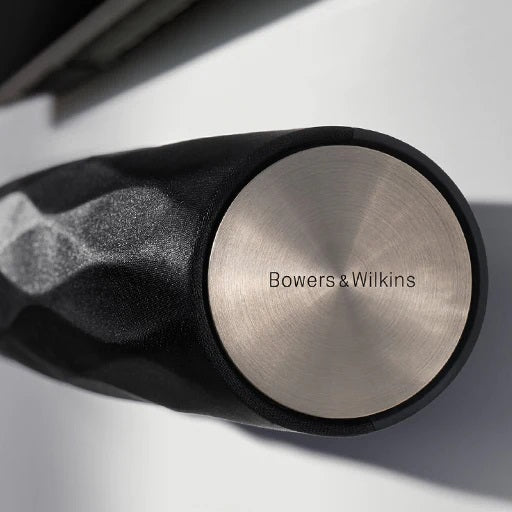Which Has Better Sound: Bowers Wilkins or Bose?
Allegiances among hi-fi enthusiasts can be as solid and partisan as they are for soccer or baseball fans. Some people pick a brand and stick with it through thick and thin, resisting all criticisms, refusing to concede any shortcomings. Once they’re in the camp, they’re not coming out.

We thought we’d try to cut through some of this energetic loyalty by making a comparative study of our own. We chose to set two very high profile, high quality hi-fi brands against each other and we picked Bowers and Wilkins, a company that was founded in the back of an electronics shop in an English seaside town back in 1966 and Bose, a US company founded two years earlier in Massachusetts.
Now, there are lots of features we could talk about, but we decided to concentrate on the single most important element which is sound quality. Yes, it’s true that design is very important. These are appliances that are going to contribute to the overall look of your home so you really don’t want something that looks cheap, ugly or out of place. Price is even more important than design, so it’s probably important that we get this one out of the way early. Bowers and Wilkins equipment is significantly more expensive than Bose products. Does that mean the sound quality is better, or simply that B&W’s material and production processes cost more? Let’s sample a few comments from enthusiasts to start with.
One user claims they can’t be compared: ‘B&W is a fantastic manufacturer of speakers, all of which blow Bose out of the water’. Another is more measured when he says it depends on which level of speaker from each brand you are comparing. Yet another dismisses Bose as being more about lifestyle than sound and even calls them ‘a poor man’s Bang & Olufsen’. Most also agree that B&W have better build quality. So it seems there’s a feeling amongst audiophiles that the question is settled. However, we decided to press ahead with our own testing, by trying out the nearest equivalents from the two manufacturers in a number of categories: over ear headphones, earbuds, soundbars, and wireless speakers. We’ll consider some of the more important functionalities as they relate to sound quality and look at a couple of key aspects, including the call quality when you’re using the headphones to make phone calls and the active noise cancellation features.
Over Ear Headphones: Bowers Wilkins PX7 versus Bose 700
While the Bose model is a little more comfortable to wear with softer earpads and not such a tight fit, it has a slightly fiddly combination of buttons and touch controls, whereas the B&W sticks to buttons, which are generally more ergonomic and just a bit easier to use. You might expect a voice assistant facility to be standard in today’s headphones, but while the Bose 700 offers this, it’s absent from the Bowers Wikins PX7. In our experience, the voice assistant is more trouble than it’s worth, so we’re not marking B&W down for this.

Noise cancelling of all kinds of background noise is an essential feature of modern headphones and we felt that the Bose 700 might just have the edge over the Bowers Wilkins PX7, although it’s a very close thing and we can’t say for sure that it would hold true in the case of all kinds of background noise. Bose gives you 10 different active noise cancellation levels compared to B&W’s three. Frankly, we felt 10 is just too much choice and sometimes less is more.
As for battery life, there’s no contest. The Bose 700 manages about 20 hours while the B&W PX7 gives you 30. Either will see you through a long-haul flight from check-in to destination, but why settle for 20 hours when you can get 50% more? Both models support quick charging through a USB-C connection but if you’re looking for the best battery life from one charge, there’s a clear winner.
Before we turn to music, let’s see how they perform when making phone calls. It’s another close decision but on balance, we felt the call quality of the Bose 700 was marginally better, with slightly clearer sound and a more sensitive microphone. The difference is not significant and we don’t see it as a major issue.
The frequency response in low, middle and high ranges shows the real differences between the two. While both deliver very satisfying bass, the 700 seems more comfortable with lighter, acoustic music, while the PX7 has the warmth and depth to shine when playing rock, funk, reggae, soul and electronic music. George Clinton and Bootsy Collins definitely need the B&W treatment.
B&W make a better all-round job of the middle frequencies, while Bose tends to favor the upper-mids, particularly the vocals. We’d have to give it to B&W on this one.
In the high frequencies, while the Bose 700 may give you a certain sparkle, with cleaner and lighter vocals, the sound from the PX7 is thicker and more velvety, which we found to be much more direct and authentic. In general, we’d make Bowers & Wilkins the winners in this category. They have very good build quality, a pleasing lack of touch controls, balanced frequency response, perfectly acceptable noise cancelling capacity for all but the most extreme background noise and good sound quality.
Soundbar: Bowers and Wilkins Formation Bar versus Bose Smart Soundbar 700
The B&W Formation Bar is a premium soundbar which has a really smart contemporary design. Cylindrical rather than a rectangle, it has very nice detail on the endcaps and you can also upgrade it easily by adding a Formation Bass, which is the matching subwoofer, and satellite speakers. It doesn’t come with a remote control so you’ll need to download the Formation App to your smartphone. It’s available for both iOS and Android operating systems. It also lacks HDMI connections nor does it support lossless audio formats like DTS:X and Dolby Atmos, although it does, of course, handle Dolby Digital.

The sound quality is fairly neutral with a slightly muddy bass performance and a fairly bright treble. When you’re listening to bass-heavy music or watching a movie with a hefty soundtrack, you might feel a little short-changed.
In all honesty, we felt that the Bose Smart Soundbar 700 has the edge over the Formation Bar. It seems better built with an impressive soundstage and strong center channel performance. It also supports DTS, features an HDMI ARC port and has more options for sound enhancement. Bowers & Wilkins is relatively new to the soundbar field, so we expect that they will deal with these shortcomings when they come to upgrade it but for now, we’d say Bose comes out on top.
Earbuds: Bowers & Wilkins P17 versus Bose QuietComfort Earbuds
Launched in 2021, B&W’s P17s are noise cancelling earbuds that deliver really high quality sound. This is B&W’s first step into the true wireless earbuds market and they’re worth the wait. Naturally, they are one of the most expensive models available but they have everything you’re likely to want. They can pair simultaneously with three devices, so they’re great for family and group listening and will let you hold your own small silent disco. Their codec support is extensive and includes aptX, aptX HD, aptX Low Latency, aptX adaptive as well as AAC and SBC. The sound quality is terrific - spacious, dynamic with good frequency response at all levels.The most innovative feature of the P17 is in the charging case, which can connect via a cable to any non-Bluetooth output and transmit the audio from the case to the earbuds. This makes it effectively a universal headset which is extremely convenient. The charging case is also important because the ear buds themselves only have a battery life of about four hours. The case retains enough charge for you to recharge the buds four times, giving you a total of 20 hours’ playback.
For earbuds, IP ratings are an important consideration. If you’re at the beach or get caught in the rain, you need to be able to rely on the water resistance of your equipment. While you aren’t going to find anything that’s truly waterproof, the better the IP ratings, the more confident you can be. The B&W P17 is Rated IP54, which means they are dust and water splash protected, while the QuietComfort Earbuds have a rating of IPX4, meaning they can handle the odd rain shower.
Bose’s QuietComfort Earbuds certainly give B&W a run for their money. They don’t support such a wide range of codecs, so you won’t find aptX adaptive or Bluetooth multipoint. Notably cheaper, they nevertheless have excellent noise cancelling tech and give a great all-round sound. Their battery life is a little shorter - six hours from one charge, plus a case with the capacity to give two more six-hour charges. The buds have four microphones to help call quality, but they really come into their own with music playback. Powerful and dynamic, they deliver deep bass and lots of detail, but they are just as good when you listen to quiet acoustic music. This one’s a little too close to call.
Speakers: Bowers & Wilkins Zeppelin 2021 vs Bose Home Speaker 500
It took B&W six years to upgrade its original Zeppelin to the 2021 edition. The company prioritizes wireless streaming over cable connectivity and, as is becoming common, you’ll need the B&W app on your smartphone to control the speaker.As soon as you set it up, you get the option to link your streaming memberships so all your playlists will be immediately available. There’s multi-room functionality thanks to AirPlay2, although you can’t get integrate the Zeppelin with B&W’s Formation multi-room setup.
The sound of the Zeppelin is clear, full and broad and with excellent bass power. We were very happy with the expansiveness of the performance and it really does seem to handle a very wide range of styles, from classical and chamber music through to jazz, rock, soul, funk, reggae and pop. Electronica and ambient are also presented with great space and clarity.
We have to say that the Bose Home Speaker 500 is a worthy rival to Bowers & Wilkins. It doesn’t have the flamboyant design of the Zeppelin and could easily be mistaken for more run-of-the-mill brands. However, despite its small stature and its slightly anonymous look, it really fills the room with sound. It benefits from Bose’s pioneering audio technology which means it makes a great smart speaker for audiophiles who expect a lot more than they got from Google or Amazon speakers.
It features eight microphones so it can pick up voice commands from some distance and even over loud music. As for the sound quality, we didn’t feel its stereo separation was a match for a two-speaker setup but within that limitation, it does have a remarkably wide soundstage. It has a warm, analogue-style sound and handles synths, guitars and keyboards with power and precision. It lacks a little something in the higher frequencies but the percussion and vocals still come across well. The bass is great and never bleeds into the mids and high frequencies. The winner? The Bose model is cheaper and does an excellent job, but ultimately we’d have to say that Bowers & Wilkins clinches it by a head.

